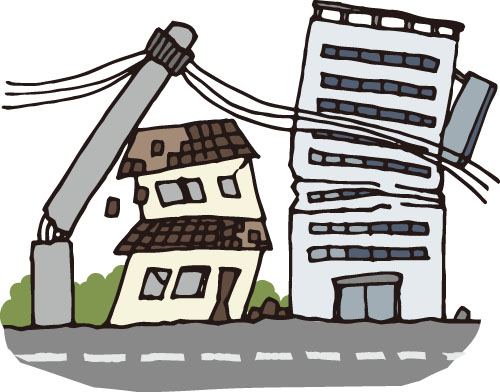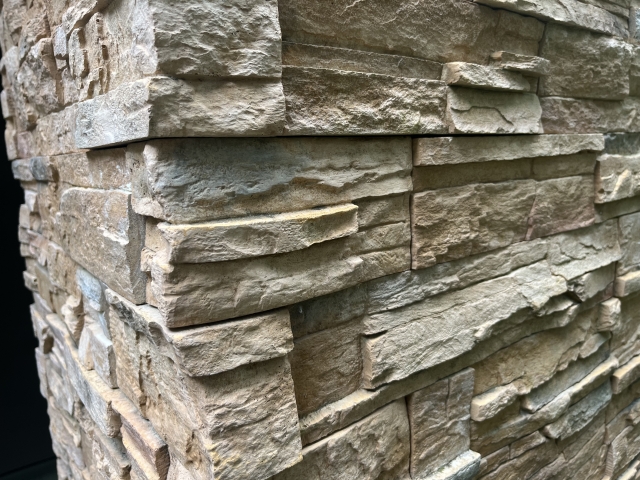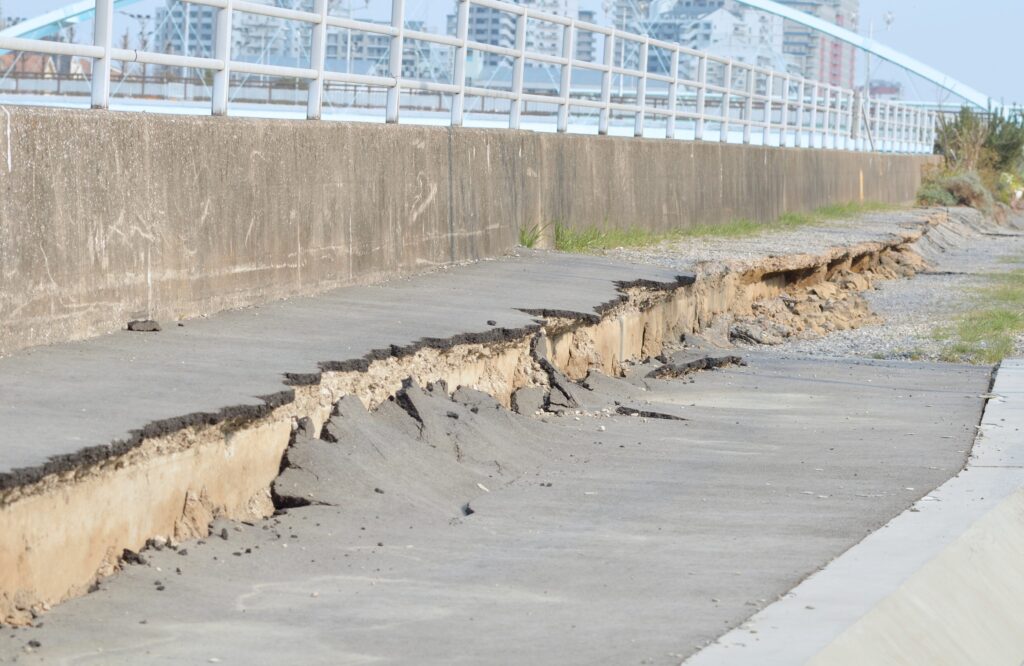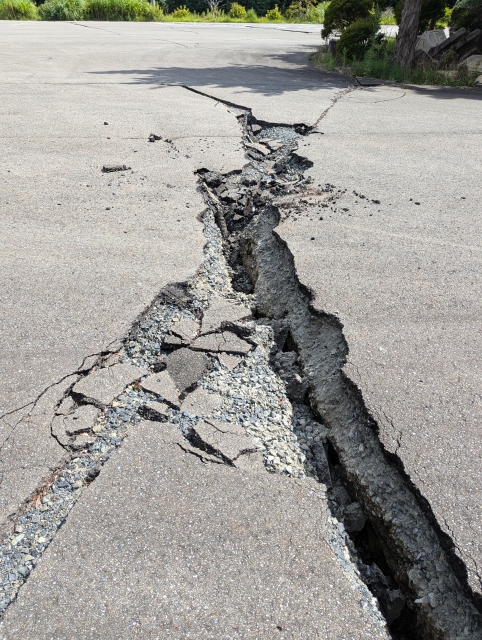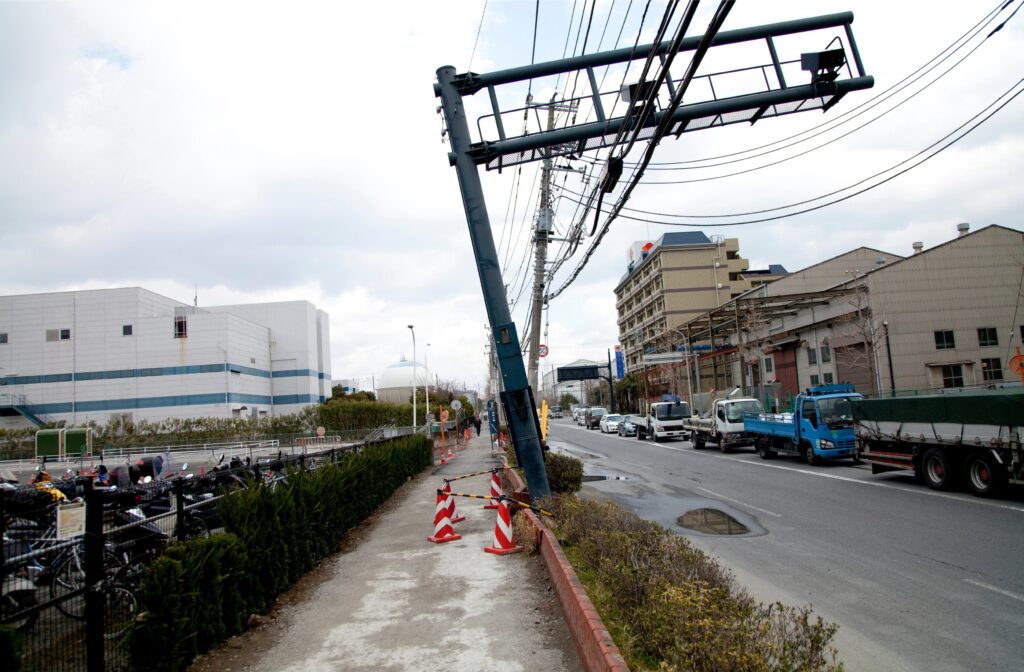Don’t Let Your Guard Down: Post-Earthquake Hazards
There are various dangers when going outside after a major earthquake. To ensure your safety, please be fully aware of the following points.
Watch out for falling objects:
- ・Be aware that anything from roof tiles to glass or signs could fall from buildings. Protect your head by wearing a helmet or covering it with a bag, and consider covering your face as well.
- ・Be careful not to touch any downed power lines, as they can electrocute you.
Concrete/brick block walls and fences:
- ・Stay away from walls and fences. They may collapse.
Be careful of the ground conditions:
- ・Cracks*1 in the ground may cause you to trip and fall.
- ・The ground may have liquefied*2. Avoid this area as it is extremely dangerous.
Other hazards:
- ・Please be aware of a possible gas leak. Open flames are strictly prohibited. Do not use any electrical appliances.
- ・Please take caution regarding a possible water leak. There is a risk of electric shock.
- ・Secondary disasters such as aftershocks or fires may occur. Please be aware of your surroundings at all times.
Essential Precautions for Evacuation:
- ・Stay with your family or group whenever possible. Avoid being alone.
- ・In an emergency, it’s important to remain calm. Don’t panic.
- ・Make sure you have access to sources of information like radio and TV to get the latest updates.
- Cracks*1Ground Fractures Induced by Seismic Vibrations:
The intense shaking during an earthquake can cause the ground to fracture directly. Stepping into these fractures poses a significant risk of ankle sprains or falls. Additionally, there’s a potential for gas leaks or water eruptions from these fractures. Due to the likelihood of secondary hazards in the vicinity of these fractures, it’s crucial to maintain a safe distance.
- Liquefied*2:When an earthquake occurs, a phenomenon called “liquefaction” can happen where loose, saturated sandy soil temporarily becomes as fluid as a liquid, losing its ability to support structures. If the ground beneath a building liquefies, the building may tilt or sink. Additionally, roads can collapse or become uneven. For those living in areas prone to liquefaction, it is crucial to evacuate to a safe location when an earthquake strikes.
Evacuate to the designated evacuation site.
In the aftermath of a large earthquake, it is essential to remain calm and be aware of your surroundings. Please evacuate safely, following the safety guidelines provided.
If you find this information helpful, please share it with others.

